Title and statement of responsibility area
Title proper
Anthony Carter fonds
General material designation
- Graphic material
- Textual record
- Object
Parallel title
Other title information
Title statements of responsibility
Title notes
- Source of title proper: Title is based on the provenance of the fonds.
Level of description
Fonds
Reference code
Edition statement
Edition statement of responsibility
Statement of scale (cartographic)
Statement of projection (cartographic)
Statement of coordinates (cartographic)
Statement of scale (architectural)
Issuing jurisdiction and denomination (philatelic)
Dates of creation area
Date(s)
Physical description area
Physical description
ca. 4000 photographs : prints, slides, negatives, and transparencies
9.4 cm textual records
2 objects
Publisher's series area
Title proper of publisher's series
Parallel titles of publisher's series
Other title information of publisher's series
Statement of responsibility relating to publisher's series
Numbering within publisher's series
Note on publisher's series
Archival description area
Name of creator
Biographical history
Anthony Lawrence Carter, the late author, publisher and photo-journalist, was born on October 22, 1920 in Somerset, England. He and his family emigrated to Wallaceburg, Saskatchewan in 1926 and later moved to Goodsoil, Saskatchewan . The Carter family leased an acre on Lac des Isles where they farmed for a living. In 1938, Carter purchased his first camera and learned how to develop his own pictures using an old developer and instructions from a Kodak booklet. In 1939, he applied to the Royal Canadian Air Force and was accepted a year later. He continued with the RCAF and the British Institute of Sciences and Engineering until he was discharged in 1945. Following his time in the Air Force, Carter held his first public exhibit in Ontario of images he had taken across Canada. He also spent time at the First Nations village in Fort Ruper t where he began building a collection of his own photographs of the community. In 1948, Carter began working for MacKenzie Barge & Derrick as a shipwright where he took his first commercial photograph and began selling prints widely. In 1951, he decided to go into child photography, which he did exclusively for three years. Carter was also an active photo-journalist in the marine and logging fields, which led to his contributions to journals such as Western Fisheries, Canadian Truck Logger and The British Motor Journal.
While photography was Carter’s main source of income during the 1950s, he also spent his summers fishing to make a living. Around 1960, Carter purchased a 60 foot fish packer, the Wamega. He was based in Klemtu at this time and collected the history and legends of the Kynoc and Kit-is-tu people, which appeared in his first book. Carter’s publications, which include This is Haida (1969), Somewhere Between (1968), From History's Locker (1968), Wamega (1960s), and Abundant Rivers (1972), were directly inspired by First Nations people and their culture. He also wrote a book called Snowshoeing for Everyone (1975). Carter was a poet and accompanied his photos with his own text. Additionally, he undertook all aspects of designing his books for publication. Carter also worked with the National Museum of Ethnology in Osaka, Japan to develop its Northwest Coast collection, and was a consultant to the Museum of Anthropology in Vancouver, B.C.
Custodial history
Between the time of Carter's death in 1992 and when the fonds was transferred to the archives in 1993 Minn Sjolseth, Carter's widow, was the custodian of the materials. It is possible there were additional custodians, suggested by divergent handwriting on the material. An accrual was donated in 2018 by Alan and Laila Campbell and also shows the traces of multiple custodians.
Scope and content
The fonds consists of photographs, transparencies, negatives, prints, slides, textual records and objects. Contents of the fonds primarily reflect First Nations cultures in British Columbia between 1960 and 1980, including the Haida, Coast Salish (formerly Burrard Reserve), Kwakiutl (Kwakwaka'wakw), Gitsegukla and Ans'pa yaxw (Kispiox) nations. Notable First Nations personalities and artists documented include Chief Dan George, Gerry Marks, Henry Hunt and Norman Tait. Contents also include: B.C. landscapes such as Gwayasdums (Gilford Island), Klemtu, Mamalilikulla and Uchucklesaht; First Nations children; First Nations exhibits, totem poles and installations at the University of British Columbia in Vancouver and for the National Museum of Ethnology in Osaka, Japan. The original accession was arranged in series according to Carter's published works which focus on specific localities, communities, individuals and subject matter, with additional series related to Carter's photojournalistic work and personal recordkeeping added in 2019 when an accrual was made to the fonds.
Notes area
Physical condition
Some transparencies and negatives are exhibiting signs of fading and/or deterioration
Immediate source of acquisition
Donated by Minn Sjolseth, Anthony Carter's widow, 1993. Accession number 2018-12 was donated by Alan and Laila Campbell (Sjolseth's son-in-law and daughter) in 2018.
Arrangement
At the time of accessioning, the arrangement of the fonds was generally indiscernible; it is possible there were multiple intervening hands prior to its arrival at the archives. Thus, the archivist has imposed a new order which better reflects the functions of the creator. The 2018 accession was arranged into the existing series and two new series (Photojournalism records and Personal records) were created to reflect Carter's work in these areas.
The contents arrived in seven binders which were rehoused in archival holdings at the time of accessioning. Photographs had been generally grouped according to subject matter (e.g., location, community members, event), with a Xeroxed copy of the original housing (e.g., envelope, folder) stapled to each grouping. The new (intellectual and physical) order imposed by the archivist primarily follows these groupings and chronology. For the 2018 accession, materials arrived in binders, slide trays and boxes, and files. These materials were also rehoused, however, arrangement generally followed the original order.
The original order of the fonds for both accessions was documented and can be found along with the finding aid in both physical and electronic formats.
Language of material
Script of material
Location of originals
Physical locations are listed in each item record, in the format of Box-File-Group.
Availability of other formats
A disc of 5 scanned images from this fonds is available in temp CD storage. Images are of Chief Dan George (1971), Mary Peters (Mely) (1967), Mt. Currie (1971), R. Davidson pole raising (1969), and Dominic Charlie (1967).
Restrictions on access
Some materials in this fonds are restricted due to the presence of culturally sensitive materials. Please consult archivist for details.
Terms governing use, reproduction, and publication
Consult Archivist for details.
Finding aids
Inventory with file list and documentation of original order available
Associated materials
Accruals
Accessions include 1994-002; 2018-12. No further accruals are expected.
Physical description
Includes:
722 photographs : col. transparencies ; 10 x 13 cm or smaller
82 photographs : col. negatives ; 10 x 13 cm or smaller
ca. 2000 photographs : b&w negatives ; 13 x 18 cm or smaller
667 photographs : col. slides ; 6 x 6 cm or smaller
184 photographs : b&w slides ; 35 mm
284 photographs : b&w and col. ; 28 x 35 cm or smaller.
7 photographs : b&w and col., mounted ; 41 x 51 cm and smaller
1 laminated press pass
1 booklet
Alternative identifier(s)
Accession number
Accession number
MOA Object ID
Standard number area
Standard number
Access points
Subject access points
Place access points
Name access points
Genre access points
Control area
Description record identifier
Institution identifier
Rules or conventions
Status
Level of detail
Dates of creation, revision and deletion
July-August 2015, Description created and revised by Alison Weck. Revised April 2019 by Alexandra Alisauskas.

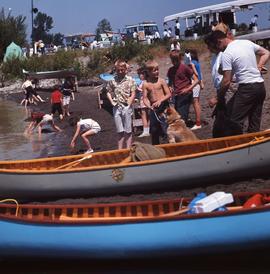
![Paul Hopkins, Kynoc [Nuxalk]](/uploads/r/null/0/1/9/0198f8849cd53c8cdf3b7ac85ef2612eae6467c4ae7dd6eef7baefa0a71b75c5/a034945c_142.jpg)
![Paul Hopkins, Kynoc [Nuxalk]](/uploads/r/null/0/c/6/0c68d2c7a80f396e74c4dc80d4185421c59adafe56b53a1577a2fbc95040c39c/a034946c_142.jpg)
![Paul Hopkins, Kynoc [Nuxalk]](/uploads/r/null/b/e/6/be60690c2ea9be38288fceaf0d3c63c6587a29e251746749db6be9f9bc9329b3/a034947c_142.jpg)
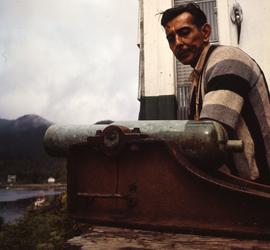
![Freeman, Kynoc & Bella Bella [Heiltsuk]](/uploads/r/null/2/a/f/2afd7beea82fb9b8dd649208d4bba4821c10b9427899408860c1f1854cecb6de/a034949c_142.jpg)
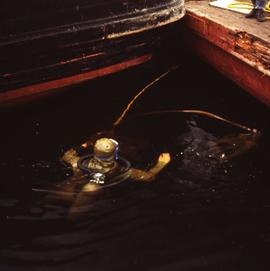
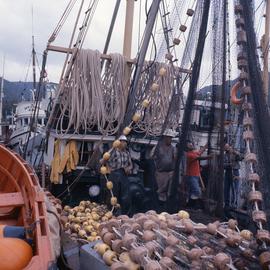
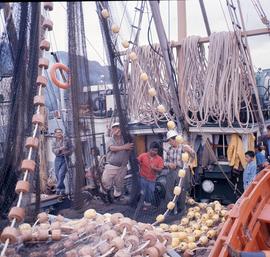
![North Coast: [scenery], Tom Brown's cannon, Nowish Cove, Finlayson Channel, Klemtu, Myers Pass ro...](/uploads/r/null/d/c/6/dc6cfb86e382ccb25a2a32f6134de1f564b23487653baa2679e9eb371760d292/a034962c_142.jpg)
![North Coast: [scenery], Tom Brown's cannon, Nowish Cove, Finlayson Channel, Klemtu, Myers Pass ro...](/uploads/r/null/c/c/c/ccc8500734cf1c1094cdee051175abd0e878658bb73a0feea0bb455d40d04d20/a034963c_142.jpg)
![North Coast: [scenery], Tom Brown's cannon, Nowish Cove, Finlayson Channel, Klemtu, Myers Pass ro...](/uploads/r/null/c/b/0/cb0daa9d04675fe04cfb50366a211dacc770cbddbb9fd6f0f9b68dc075ed0acb/a034964c_142.jpg)
![North Coast: [scenery], Tom Brown's cannon, Nowish Cove, Finlayson Channel, Klemtu, Myers Pass ro...](/uploads/r/null/6/8/f/68f9cb243761a75518fe38b666e391dd0b6ba2edfddb16463fb4d1fb555d5179/a034965c_142.jpg)
![North Coast: [scenery], Tom Brown's cannon, Nowish Cove, Finlayson Channel, Klemtu, Myers Pass ro...](/uploads/r/null/0/5/d/05dc87b33c87aba5ed1f3c0fa103df0c2cdda12f2013112e7123f17960d9dbdd/a034966c_142.jpg)
![North Coast: [scenery], Tom Brown's cannon, Nowish Cove, Finlayson Channel, Klemtu, Myers Pass ro...](/uploads/r/null/e/e/3/ee347a4362e35829c8ccf1a28ae54b44a2235ee123f8005c18ade53ab83be1f5/a034967c_142.jpg)
![North Coast: [scenery], Tom Brown's cannon, Nowish Cove, Finlayson Channel, Klemtu, Myers Pass ro...](/uploads/r/null/d/a/d/dadd32a068b8317dcd417f4bd2bba4e56ccbed6a18a03e1cff880c64e6a3e371/a034968c_142.jpg)
![North Coast [secenery], Tom Brown's cannon](/uploads/r/null/1/b/7/1b7def696f73132e0fc22d5b48ed6af1704a11e0333f48c5a30f2194b5aa4c2a/a034971c_142.jpg)
![North Coast: [scenery], Tom Brown's cannon](/uploads/r/null/6/1/0/610eeaad2033cb8d19519bc2c847bcf7da48a81b839283fc2bf919c300e2e1fb/a034972c_142.jpg)
![North Coast: [scenery], Tom Brown's cannon](/uploads/r/null/f/1/7/f175b96823a0fa420f2ecd362b251452fe8a66d3da1a7f8c4ccfdb93686c2c31/a034973c_142.jpg)
![North Coast: [scenery], Tom Brown's cannon, Nowish Cove, Finlayson Channel, Klemtu, Myers Pass ro...](/uploads/r/null/2/9/6/296075a57cee98e9b47a0d58504cc99fea965a522156c2bb9824b6f45e82ab8d/a034974c_142.jpg)